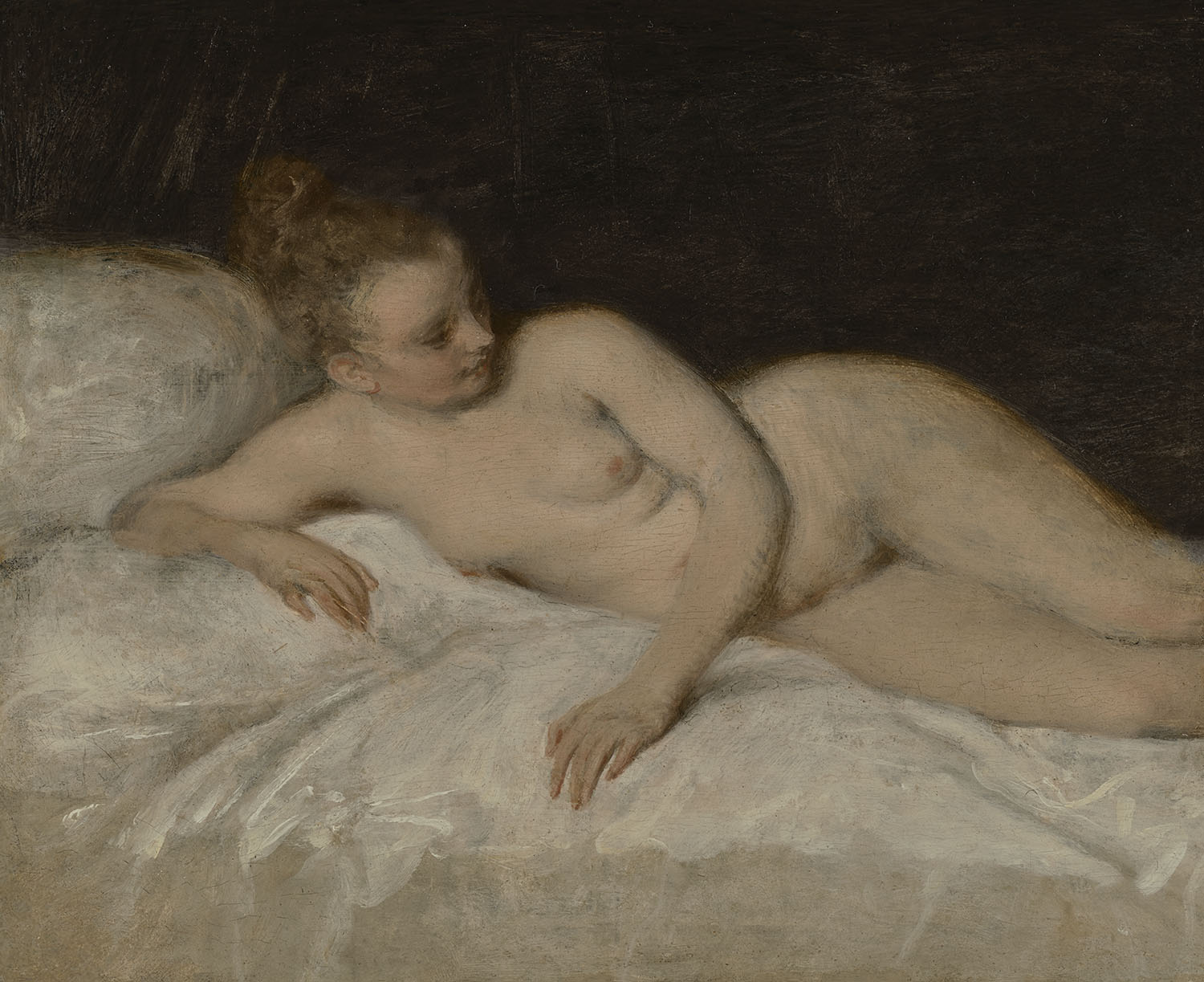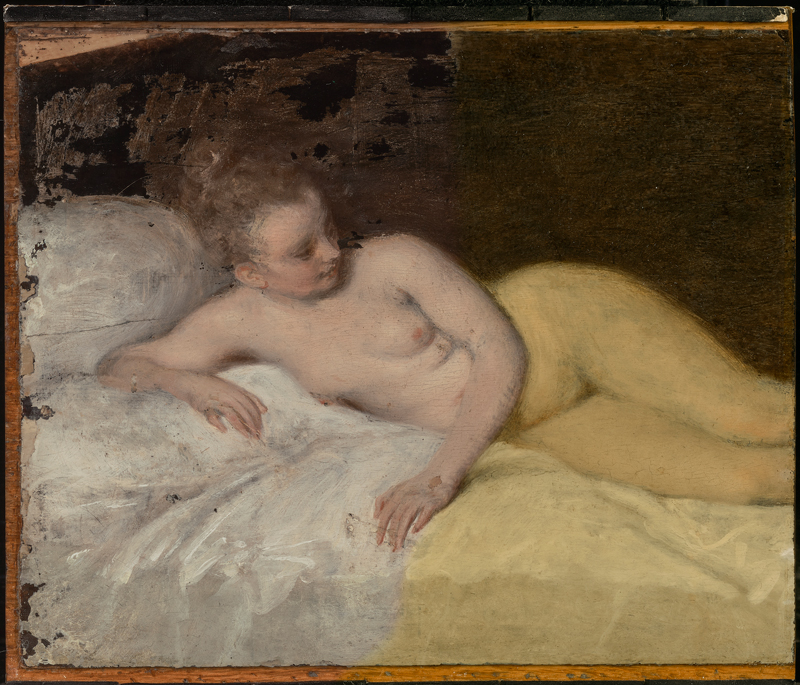Reclining Nude
c. 1713–17
Jean-Antoine Watteau (French, 1684–1721)
Oil on panel
The Norton Simon Foundation
Jean-Antoine Watteau was received into the Royal Academy as a “painter of fêtes galantes,” a designation devised especially for him. His paintings are unique for their suggestion of mood, in particular the transitory sensations of love and melancholy. The subtle, erotic grace of this reclining nude is one in which he took obvious delight. The painting is titillating both for the ambiguity of its subject and for the transitions between passages of fine and bold brushwork, which add spontaneity to the intimate moment depicted. Atmospheric light and the union of color create space around the figure. They demonstrate Watteau’s affiliation with the sensual Rubénistes, named after Peter Paul Rubens, over the intellectual rigor of the Poussinistes, named after Nicolas Poussin, whose inspirations derived from classical art.
An Interview with Conservator Kari Rayner
Does technical analysis always reveal the secrets of an object’s making? In the case of Antoine Watteau’s Reclining Nude, scientific study at the J. Paul Getty Museum raised more questions than it answered. Chief Curator Emily Talbot interviewed Kari Rayner, Associate Paintings Conservator at the Getty, about her work treating and studying the panel in 2021. Rayner removed yellowed varnish from the surface and inpainted damaged areas to restore Watteau’s delicate palette. It was hoped that infrared reflectography and X-radiography would offer definitive answers about the painting’s relationship to the Getty’s related drawing by the artist, The Remedy. However, her analysis revealed nothing conclusive about the small painting’s derivation from the larger drawing: While the panel support appeared to have been cut down on the right, there were no traces of an additional figure under the painted surface.


